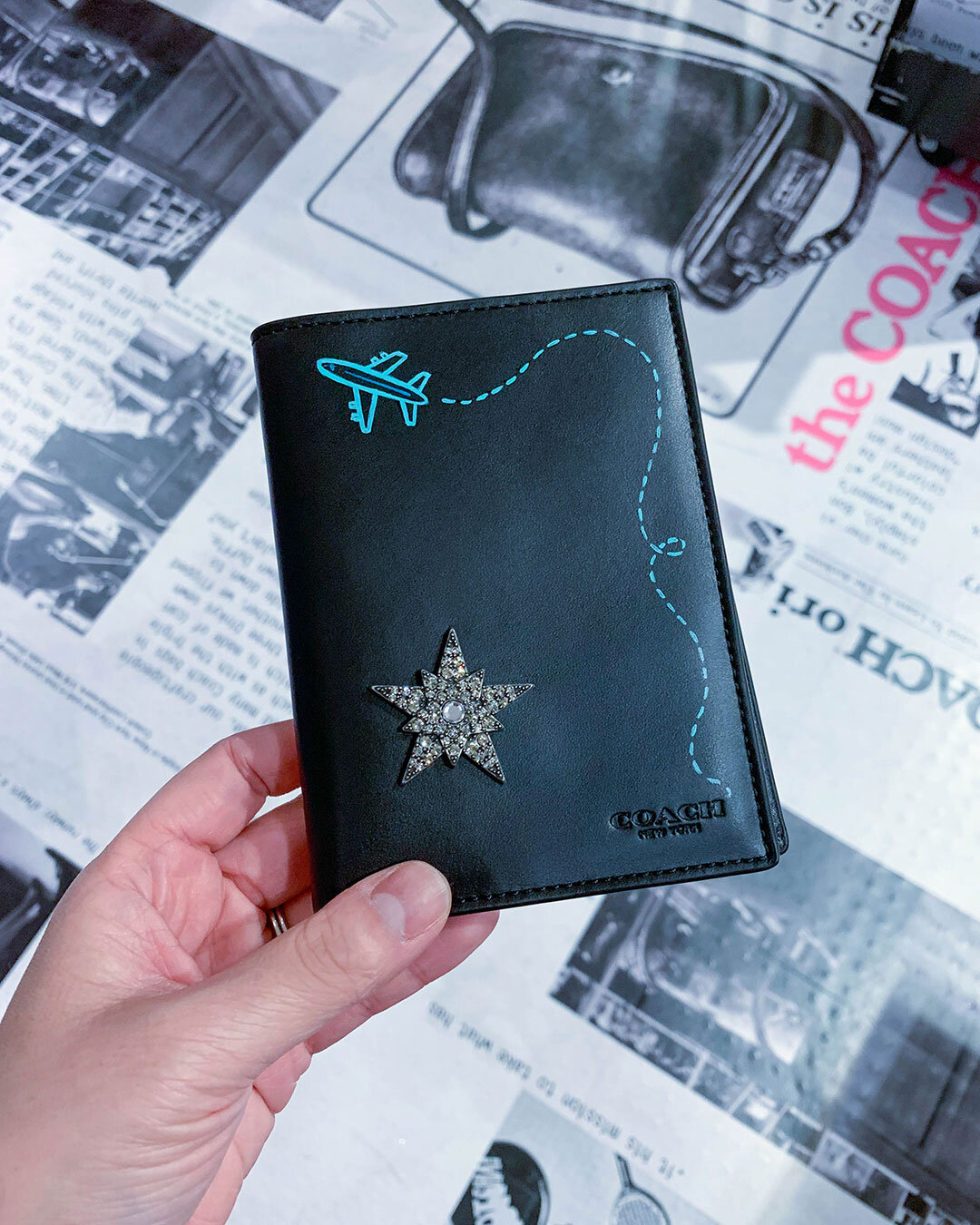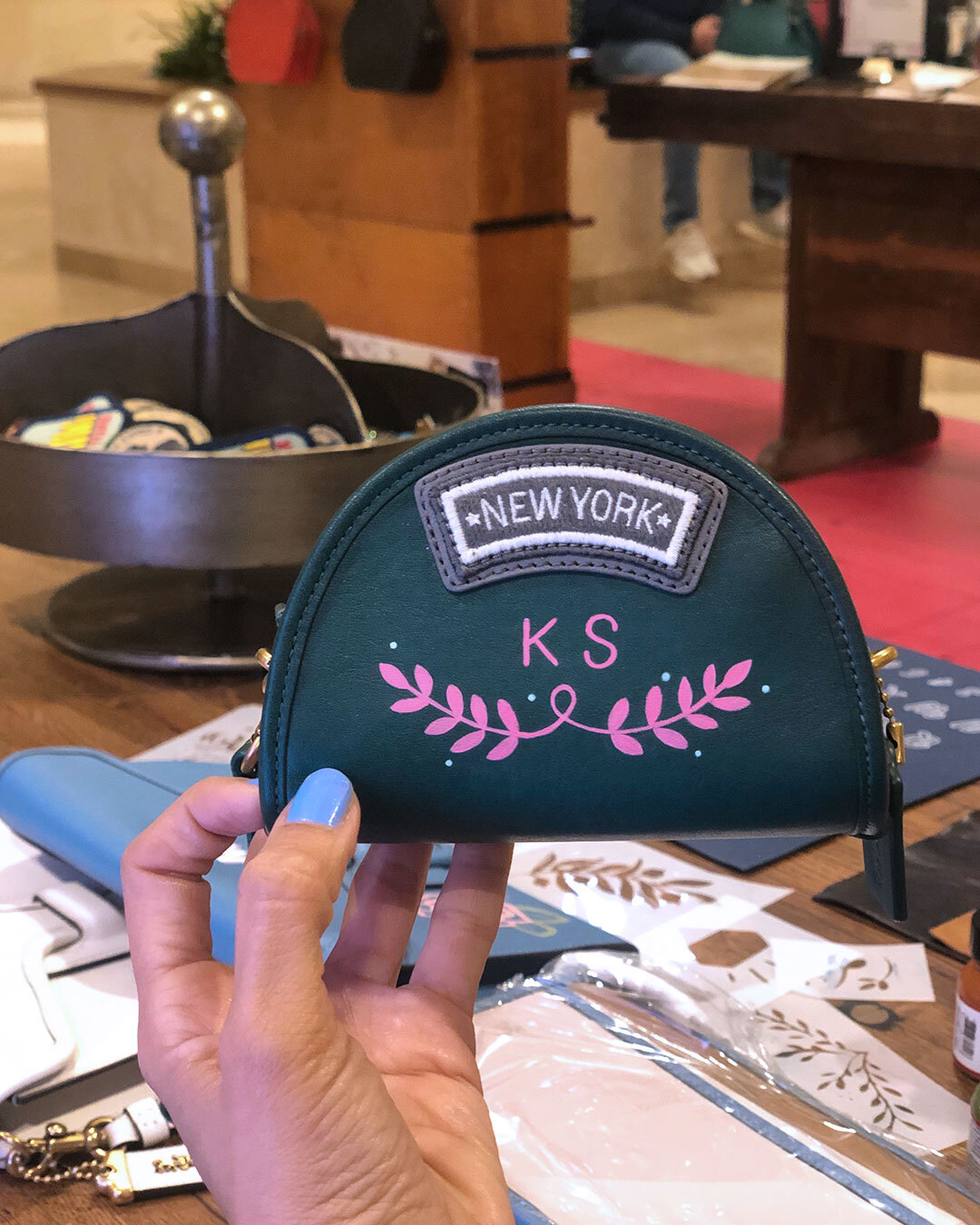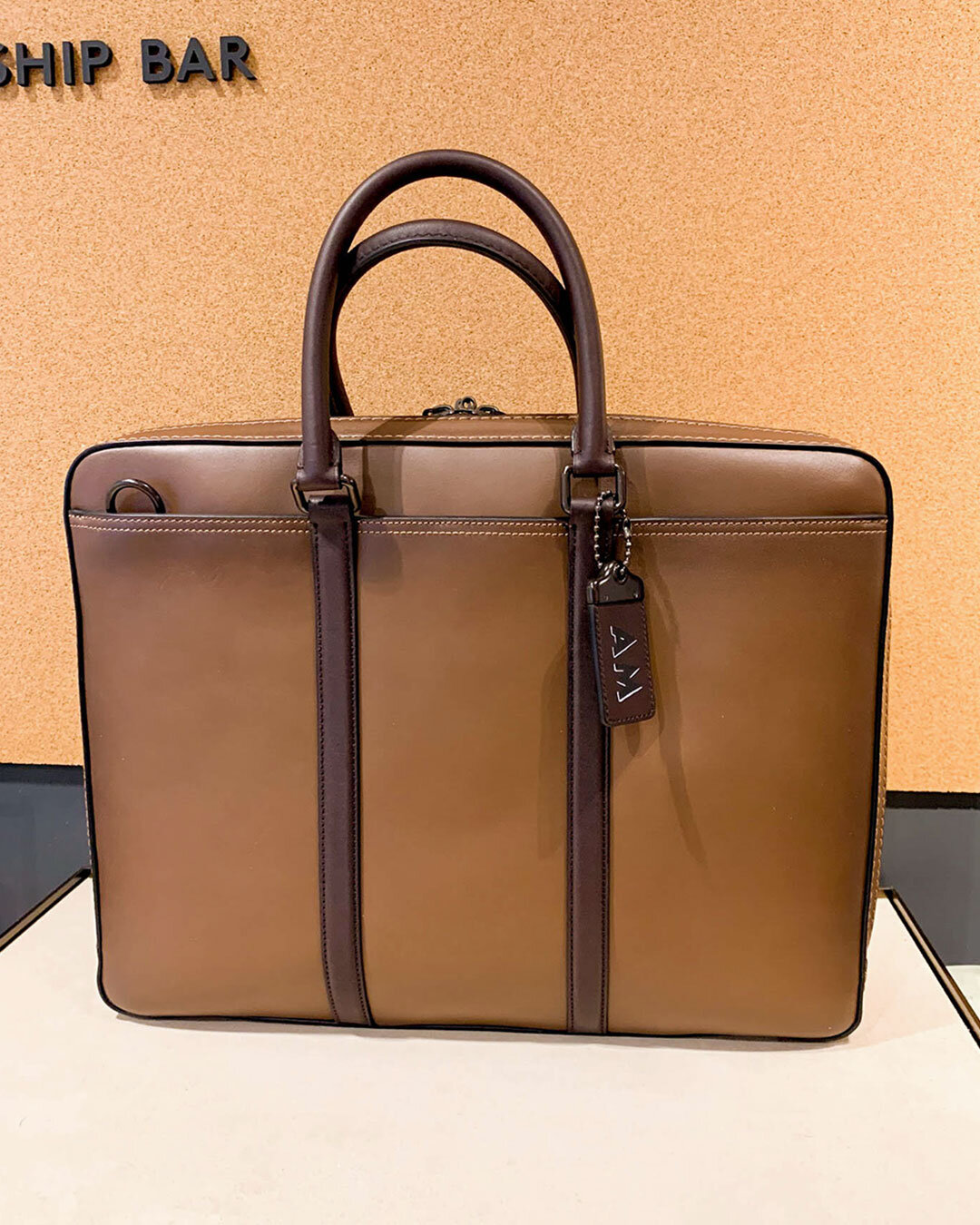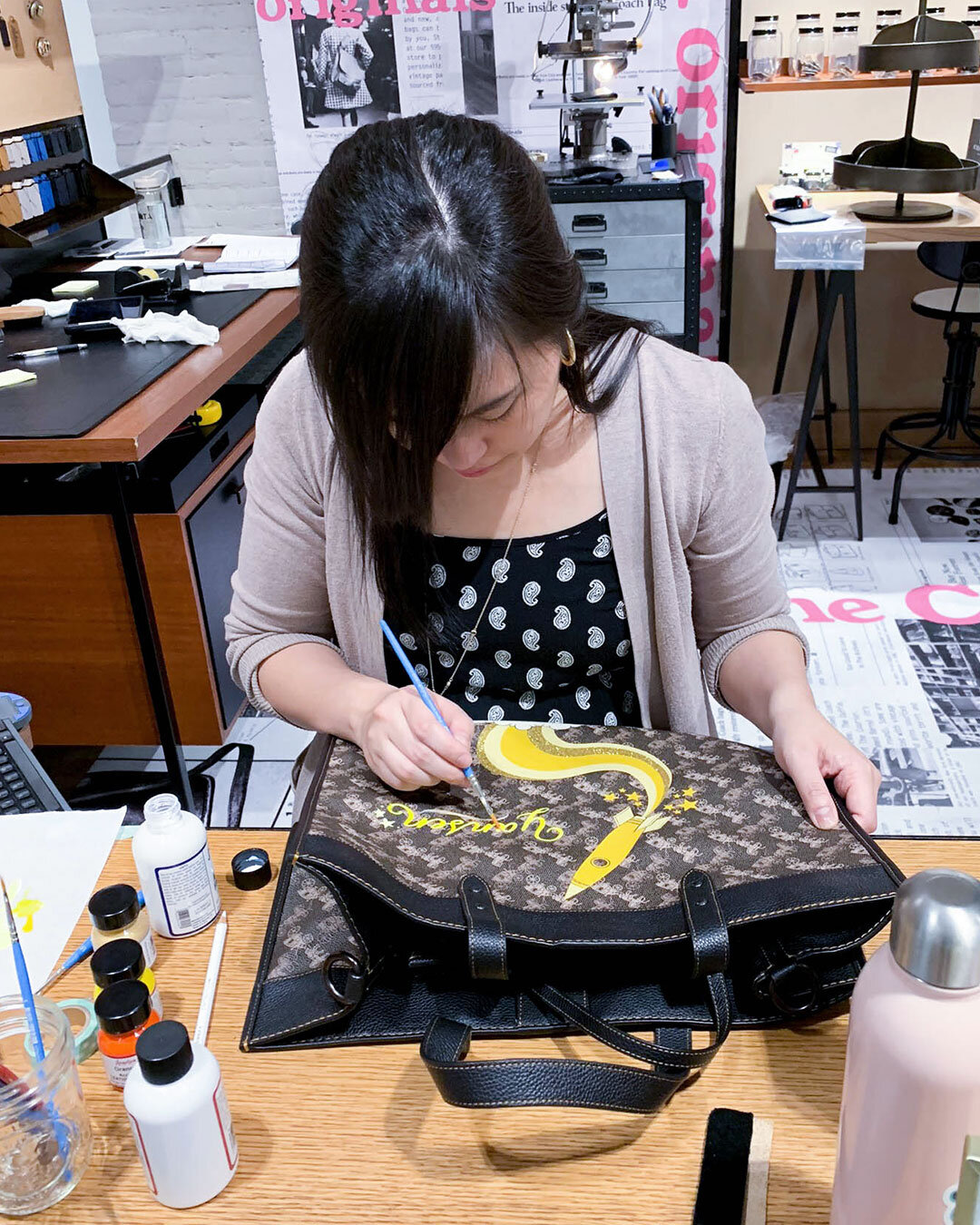How to paint on leather in 3 simple steps
Painting on leather is a useful skill to have for customizing your own leather products, for personalized gifts, and for on-site live lettering engagements for clients or in-store customization events for luxury brands.
I teamed up with Belinda Skou, a fellow lettering artist, to share with you our process on how to paint on leather for brands like Coach.
Here is an outline of the steps we will be covering:
Step 1: Gather painting materials
Step 2: Plan out lettering
Step 3: Choose one of two methods to paint
Optional final step: Apply finisher after the paint dries
Step 1: Gather painting materials
Gather your materials. We prefer using Angelus paints with round (sizes 00–3) and flat paint brushes, and a selection of paint markers like Posca, Sharpie Oil Based, and DecoColor.
See a comprehensive list of all our painting materials in part 1 of this series here and snag a free copy of our painting materials checklist!
Step 2: Plan out lettering
Before painting the leather, it helps to plan out the lettering and set down guidelines to make sure everything is centered. Use a water solvent pencil (we prefer Stabilo) to sketch out your letters and design. This will help you to get a better idea of sizing and give you a chance to fix your design before you apply the paint.
Washi tape or painter’s tape is also great for laying down guidelines to keep your letters straight, and you can easily peel them off when you are done.
Step 3: Paint on leather
Before painting, make sure your leather product is clean with a dry surface. There are leather deglazers available, but we have tested this in the past and noticed that it can damage the product, so we chose not to use them when personalizing products for Coach.
There are two ways you can letter with paint on leather: you can either paint directly on the leather with acrylic paint like Angelus paints and brushes, or you can use paint markers. Which one you use is really a matter of preference!
Angelus paints and paint brushes
Start applying layers of paint.We prefer using round (sizes 00–3) for details and flat shader brushes for larger sized lettering. When in doubt, start with a small brush size, as you can always build up your lettering, but you’re pretty stuck once the paint is applied. Leather remover or rubbing alcohol and q-tips can erase somewhat if you do it quickly.
Keep the paint consistency thin, so that it dries quickly. You will need to do several coats, especially with lighter colors like white, yellow and pink.
Paint markers (oil based or acrylic)
We prefer to use Posca, Sharpie (oil based) and DecoColor markers. There are different color offerings for each brand so you may end up choosing them based on what colors you prefer. It helps to test the markers on leather scraps first to see if you like the way they lay on the surface of the material and how well you can work with them.
Paint markers are personally handy for us for script lettering and adding finer details to smaller designs.
Optional final step: Apply finisher after the paint dries
Angelus paints and markers dry quickly, so this shouldn’t take too long! If you’re covering a LOT of surface area with the paint, you can speed up the drying process with a hair dryer (just don’t hold it too close to the product).
Once the paint is completely dry, wipe off any remaining sketch marks from your water solvent pencil with a damp towel or rag.
Applying a finisher is optional, but it helps to protect the paint from cracking. To apply, use a clean brush to add a thin layer of Angelus finisher on your design. To be safe, test this first on scrap leather to see how you like it. It adds a very subtle shine, but we found that this was helpful when using an acrylic marker that usually has a chalkier appearance when it dries. Because it does dry with a glossier appearance, be careful not to apply finisher on non-painted areas of the leather.
Ready to customize leather products at on-site brand activation events?
Check out the PART 3 of our blog series, where we provide tips on being an on-site artist for live customization events!
Get your free live lettering on leather materials check list!
If you haven’t already, sign up today and get access to our downloadable materials list!
ABOUT THE AUTHORS
Belinda Kou is a lettering artist and illustrator based in Chicago. Known for her colorful and energetic illustrations, she often draws inspiration from food and beverages to develop thoughtful storytelling. She has had the pleasure of working with clients like NPR, Coach, The Washington Post, Logitech, and Michaels.
Roselly Monegro is a lettering artist and illustrator based in Los Angeles, CA. She is specialized in digital art pieces, murals and live-lettering customizations for events and mostly known for her colorful art pieces that incorporate a mix of shapes, florals, textures and unique letterforms. She's passionate about creating art with powerful messages for women about self-love and mental health. Roselly has worked for brands such as Coach, Prudential, Facebook, Cariuma



















